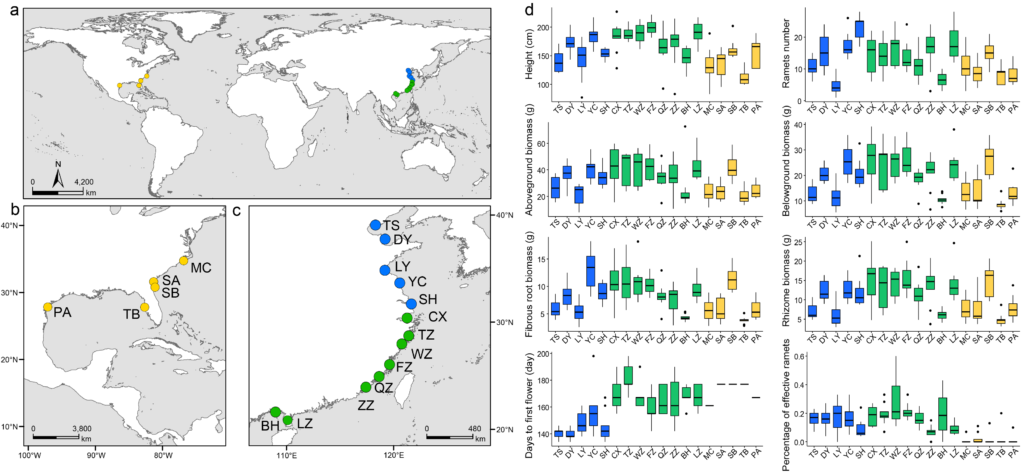Yan Hao1, Xin-Feng Wang2, Yaolin Guo1, Tian-Yang Li1, Ji Yang1, Malika L. Ainouche3,
Armel Salmon3, Rui-Ting Ju1, Ji-Hua Wu4, Lin-Feng Li1,2, and Bo Li1,5
1 Ministry of Education Key Laboratory for Biodiversity Science and Ecological Engineering, Coastal Ecosystems Research Station of Yangtze River Estuary, Institute of Biodiversity Science and Institute of Eco-Chongming, School of Life Sciences, Fudan University, Songhu Road 2005, Shanghai 200433, China;
2 State Key Laboratory of Biocontrol, Guangdong Provincial Key Laboratory of Plant Resources, School of Life Sciences, Sun Yat-sen University, Guangzhou 510275, China;
3 UMR CNRS 6553 Université of Rennes, Campus de Beaulieu. 35 042 Rennes Cedex, Paris, France;
4 State Key Laboratory of Herbage Improvement and Grassland Agro-ecosystems, College of Ecology, Lanzhou University, Lanzhou, China;
5 Ministry of Education Key Laboratory for Transboundary Ecosecurity of Southwest China, Yunnan Key Laboratory of Plant Reproductive Adaptation and Evolutionary Ecology and Centre for Invasion Biology, Institute of Biodiversity, School of Ecology and Environmental Science, Yunnan University, Kunming, Yunnan, China.
Abstract
Invasive alien species is the primary driver of biodiversity loss and species extinction. Smooth cordgrass (Spartina alterniflora) is one of the most aggressive invasive plants in coastal ecosystems around the world. Here we showed that introduced Chinese populations have evolved competitive traits, such as early flowering time and high plant biomass, during the secondary introductions along China’s coast. Population genomic and transcriptomic inferences revealed distinct evolutionary trajectories of the low- and high-latitude Chinese populations. In particular, bridgehead effect during secondary introductions together with independent natural selection in the process of local adaptation might have resulted in high dynamics of genome architecture in introduced Chinese populations. Our study provides phenotypic and genomic evidence of how an invasive species rapidly adapts to variable environmental conditions in non-native ranges.
Keywords: Adaptation, Natural selection, Invasive species, Population genomics, Spartina alterniflora
Status: in revision

Fig. 1 Sampling information and phenotypes of native United States (US) and invasive Chinese populations.
Please email me for more information.
